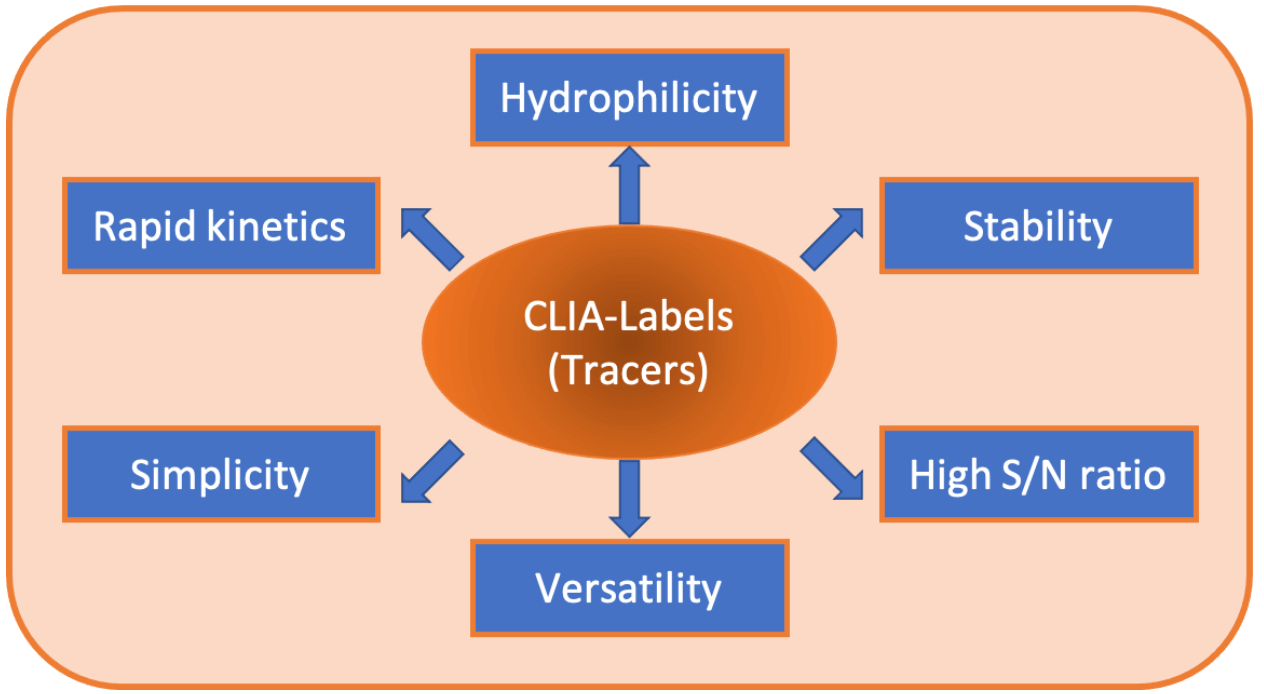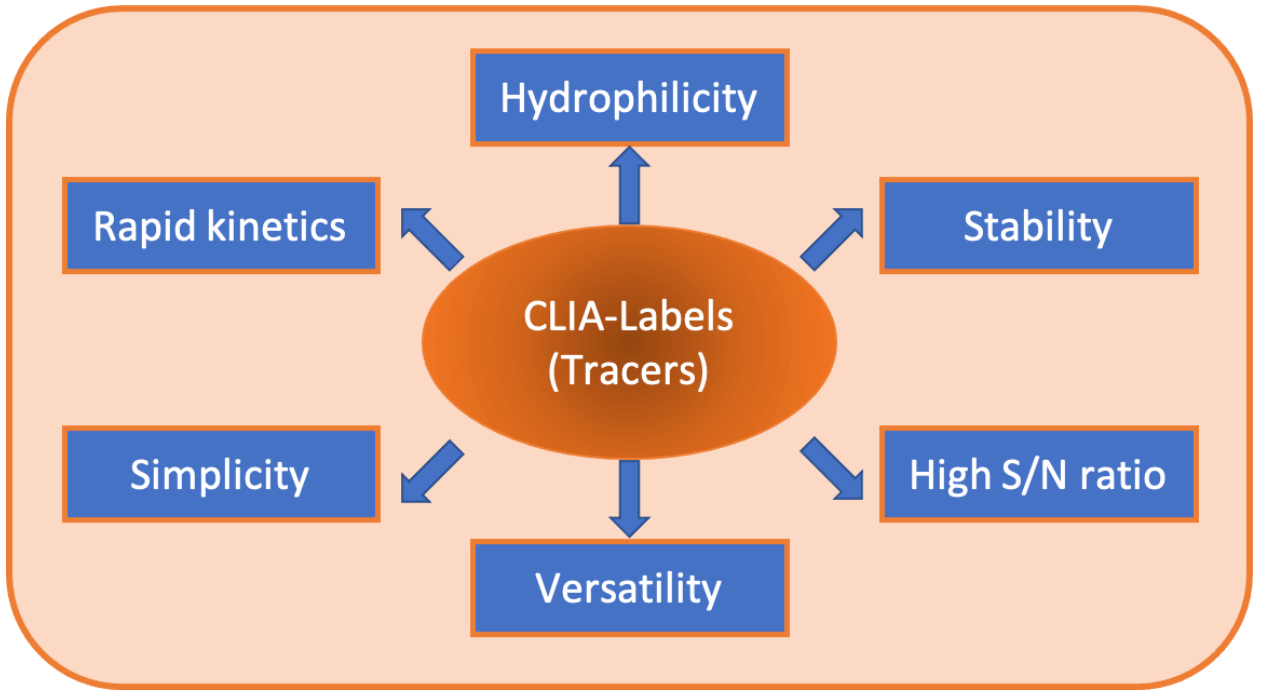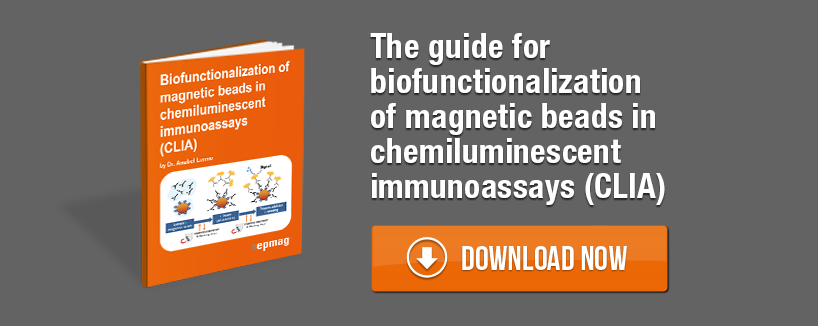The tracer, the antigen or antibody labelled with a chemiluminescent tag for CLIA, is the next vital optimization step of a chemiluminescent immunoassay. As mentioned earlier, chemiluminescent labels generate light from a chemical reaction. Widely used CLIA labels are based on luminol derivatives or acridinium esters.

CLIA label desired properties
CLIA labels should have the following characteristics for optimizing the Tracer design:
Stability- The CLIA label should be stable in order to prevent the decay of response over the time, providing extended reagent shelf life and extended reagent on-board stability. This is especially important during the reagent shipment to assure the stability of the CLIA label under extreme conditions of temperature.

High signal to noise ratio - For a CLIA assay it is important to have as much more signal than noise as possible.This helps ensure that the limit of detection can be low because the signal can be distinguished from noise at small concentrations.
Versatility - The versatility of a tracer can expand your ability to design a CLIA. The same CLIA label should be used to bind small haptens to large antigens or antibodies, the label should be able to bind efficiently to any molecule of interest.
Simplicity - Ideally, the tracer mechanism should not be complicated so that the emission of light is easily triggered. A simpler tracer reaction will decrease the likelihood of error when using the assay.
Rapid Kinetics - For a CLIA assay it is important to provide a result the sooner the better so it is preferable that the light of emission will be completed in seconds for having high throughput.
Hydrophilicity - The CLIA label should be hydrophilic in order to improve the tracer solubility, this can be made by modifying the CLIA label with groups that can improve solubility such as PEG structures. This will reduce the non-specific adsorption of the tracer being able to detect lower concentration of the analyte.
Related news
- Moving from Latex Particles to Magnetic Latex Particles
- Aspects of available Chemiluminescent immunoassay (CLIA) kits in the market
- Streptavidin HRP




